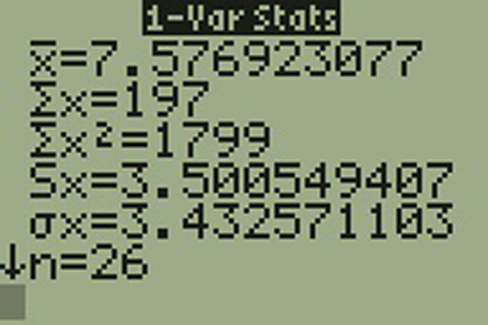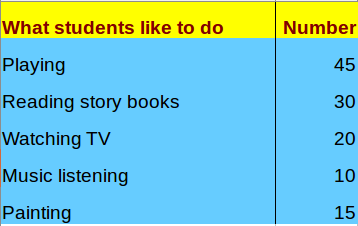In other words, OER are similar to coal, sitting there waiting to be packed. Coal of course is still a really important item. But it has actually to be mined, kept, delivered and processed. More attention requires to be paid to those contextual aspects that turn OER from raw 'material' into a helpful learning experience.
Coal of course is still a really important item. But it has actually to be mined, kept, delivered and processed. More attention requires to be paid to those contextual aspects that turn OER from raw 'material' into a helpful learning experience.
For an useful overview of the research on OER, see the Review Task from the Open Education Group. Another important research study task is ROER4D, which aims to provide evidence-based research study on OER adoption across a variety of nations in South America, Sub-Saharan Africa and Southeast Asia. Despite these limitations, instructors and trainers are increasingly developing open academic resources, or making resources freely readily available for others to use under an Imaginative Commons license.
As the amount of OER expands, it is more most likely that instructors and instructors will progressively be able to find the resources that best match their specific mentor context. There are therefore several choices: take OER selectively from elsewhere, and integrate or adjust them into your own courses; produce your own digital resources for your own mentor, and make them available to others (see for example Developing OER and Combining Licenses from Florida State University); construct a course around OER, where students need to find content to solve problems, compose reports or research on a topic (see the situation at the beginning of this chapter); take an entire course from OERu, then develop trainee activities and assessment and supply learner support for the course.
For example, MIT's OpenCourseWare (OCW) might be utilized simply for interest, or students who fight with the topics in a classroom lecture for a credit course might well go to OCW to get an alternative method to the same subject (see Situation B). Regardless of some of the existing restrictions or weaknesses of OER, their usage is most likely to grow, just because it makes no sense to create whatever from scratch when great quality products are freely and easily offered.
This will only grow gradually. We will see in Section 11.10 that this is bound to change the way courses are designed and used. Certainly, OER will show to be one of the essential functions of teaching in a digital age. 1. Have you used OER in your own course( s)? Was this a favorable or negative experience? 2.
Under what scenarios would you be prepared to create or convert your own material as OER? Falconer, I. et al. (2013) Overview and Analysis of Practices with Open Educational Resources in Adult Education in Europe Seville, Spain: European Commission Institute for Prospective Technological Studies Hampson, K. (2013) The next chapter for digital educational media: content as a competitive difference Vancouver BC: COHERE 2013 conference Hilton, J., Wiley, D., Stein, J., & Johnson, A.
The four R's of openness and ALMS Analysis: Structures for open educational resources. Open Learning: The Journal of Open and Range Knowing, 25( 1 ), 3744 See also: Li, Y, MacNeill, S., and Kraan, W. (undated) Open Educational Resources Opportunities and Difficulties for Higher Education Bolton UK: JISC_CETIS.
(undated) Open Educational Resources Opportunities and Difficulties for Higher Education Bolton UK: JISC_CETIS.
Before we start discussing Open Educational Resources (OER), let's briefly talk about the fundamental concepts: copyright and licenses, particularly open licenses. Copyright, a type of copyright law, protects initial works of authorship. The copyright sign most likely looks familiar: However, this is necessary to bear in mind! Your work-- yes, even the work you produce as students for classes!-- is under copyright protection the minute it is produced and in a "tangible form." Virtually any type of expression will qualify as a tangible form, consisting of the scribbled notes on the back of an envelope that contain the basis for an impromptu speech.
Copyright covers both published and unpublished works. So, if you produced your original work in a tangible form, like in a paper or a PowerPoint slide, congratulations! You are now a copyright owner. This connects us to another critical principle: license. Image source: This image on "OER Mythbusting!" is licensed under CC BY 4.0.
Initially, a little bit of history about OER for context. OER (or Open Education Resources) is a term that was created in 2002 by UNESCO to explain an effort planned to cause universal education resources. OER is referred to as "teaching, finding out and research study products in any medium, digital or otherwise, that live in the general public domain or have actually been released under an open license that allows no-cost access, usage, adaptation and redistribution by others without any or restricted limitations." OER can refer to many kinds of learning resources from textbooks, complete courses, and curricula, to videos, tools, software, or even methods used to support access to knowledge.
OER was caused as a recognition of the Universal Declaration of Human Rights that "everyone can education." OER was likewise created as an effort to promote discussion, create policy, and establish the means by which education resources can be broadly established and dispersed to everybody. OER is typically used to make instructional resources more inexpensive and available.
Here are some examples of how OER is utilized, and the advantages it has: Queen Media just recently partnered with SkillsCommons.org to re-design OER content that was initially developed by the Massachusetts Bay Neighborhood College, into an interactive course on Quality Care and System Conversions for nursing assistants. The goal was to create a cost effective, self-paced training module that could be utilized for range education programs, or mixed together with traditional coursework.
The outcome was a fully-responsive, self-contained lesson on Quality Care and System Conversions. The technique enabled students an option for self-paced, online practice. The responsive style made the lesson likewise accessible on smart phones. Features of the re-design included real life practice examples, pertinent videos, in-line handy tips and mini-practice modules, exploratory linear and non-linear navigation and course completion tracking.
OER is here, and it's forming the landscape of education today and tomorrow, benefiting everybody, from content manufacturers to consumers. Now that you know why OER was developed, what it is, and how it's being used, the concern ishow will you use OER to help your organization be successful? To find out more about how Queen Media can help you utilize OER in your next eLearning project, please call, e-mail, or visit our website.
In the BCcampus Open Education Self-Publishing Guide, we've shared our meaning of open educational resources (OER): "teaching, learning, and research study resources that, through permissions given by their creator, permit others to utilize, distribute, keep, or make changes to them." OER are teaching resources that have an open-copyright licence (such as one from Creative Commons), or they are part of the public domain and have no copyright.
Open textbooks are a subset of OER, and while we focus much of our effort on creating, evaluating, sharing, and supporting open books, there are many types of OER offered, such as: Online courses Videos Audio Presentation slides Syllabi Course details Additional products, such as tests and assignments Among the driving elements for the adoption of OER, such as open textbooks, is they are totally free.





